Banking on a Tourist Boom
Back to Contents of Issue: October 2003
|
|
|
|
by Matt Wilce |
|
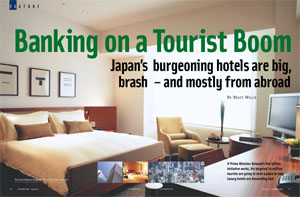 TOKYO CURRENTLY HAS AROUND 35,000 hotel rooms, ranging from budget bunks to palatial suites, and Joens Lang LaSalle Hotels Asia Digest predicts another 3,000 rooms will be available in the luxury market by 2008. Compared to other major capitals such as London, which has around 46,000 hotel rooms, Tokyo's 35,000 seems rather paltry. But as a wave of new high-end properties open, Koizumi's legions of foreign visitors won't be forced to resort to blue plastic tents just yet.
TOKYO CURRENTLY HAS AROUND 35,000 hotel rooms, ranging from budget bunks to palatial suites, and Joens Lang LaSalle Hotels Asia Digest predicts another 3,000 rooms will be available in the luxury market by 2008. Compared to other major capitals such as London, which has around 46,000 hotel rooms, Tokyo's 35,000 seems rather paltry. But as a wave of new high-end properties open, Koizumi's legions of foreign visitors won't be forced to resort to blue plastic tents just yet.
The local media are dubbing the recent opening of the Grand Hyatt in Roppongi Hills, the Four Seasons Marunouchi and the Royal Park in Shiodome the start of a "hotel war." Certainly much attention has been focused on these new properties, which have injected much-needed lifeblood into an industry that has become stagnant over the last decade -- since The Westin Tokyo, owned by Sapporo Hotel Enterprises Ltd, opened in October 1994 in Ebisu. A second wave of new hotels will feature the entry of the Mandarin Oriental, Peninsula and St. Regis brands into the market, with the first of these opening in 2004.
Grand Designs
"What we've done is set a new benchmark, and it's really a wake-up call for some of the older, more established hotels," notes Robert Hamer, executive assistant manager for food and beverage at the Grand Hyatt Tokyo. "Japan has really lacked an international injection of new hotels for the last eight to 10 years. We are not necessarily attracting new business to Japan with our hotel -- we are diluting the share of the existing pie amongst the existing hotels." The grand dames of Japan's hotel scene are being pressured to move with the times. "No one is questioning the quality of the other hotels," Hamer adds. "And they maintain it well. But anything new is the latest thing that everyone wants to try." Hamer cites the high opening numbers Grand Hyatt Tokyo has experienced -- bolstered by the barrage of media coverage the Roppongi Hills opening received and the patronage of A-listers such as the lead actresses from Charlie's Angels and the ubiquitous soccer superstar, David Beckham. The celebrity hype belies a very carefully planned operation that is proving to be the model for other brands set to enter the market.
One of the first players to get in on the expanding luxury market was the Summit group, which opened the Cerulean Tower Hotel in Shibuya in 2001. The opening of their 450-room Royal Park Hotel in Shiodome in July of this year has further expanded their portfolio to include four properties in the capital, with three other hotels located in Yokohama, Nagoya and Osaka. A relatively new group, Summit Hotels & Resorts was founded in 1991 and now handles more than 140 hotels in 45 countries worldwide. The newly opened Royal Park Shiodome will soon face more direct competition than many of the other new hotels, when the St. Regis also opens in the area next year.
Leading the next wave of new arrivals, the St. Regis -- part of the high-end Luxury Collection operated by Starwood Hotels & Resorts Worldwide -- will open in Shiodome in 2004. Starwood, which also operates The Westin Tokyo, will open the new property in conjunction with major Japanese developer Mori Trust Corp. The St Regis will be followed by the arrival of the Mandarin Oriental Tokyo in late 2006. Mandarin Oriental International will manage the new property in a long-term lease agreement with the owner and developer of the hotel, Mitsui Fudosan Co. Mandarin Oriental is committed to investing approximately $37 million, principally in 2004 and 2005, into furniture, fixtures, equipment and pre-opening costs. The Mandarin Oriental Tokyo will occupy the top 10 floors of the new 41-story Muromachi Mitsui Shinkan building, which will incorporate the historic 72-year-old Mitsui Main Building in Nihombashi. Mandarin currently operates 10 hotels in Asia, with nine more in Europe and North America. "This is a significant step in our strategy to grow the Mandarin Oriental brand worldwide," Edouard Ettedgui, Chief Executive Officer of Mandarin Oriental International Limited, said upon announcing the deal in 2001. "Opening the most luxurious hotel in Tokyo will fill an important gap in our portfolio of properties in our Asian heartland."
"We felt that the location was superb, possibly the best location in the city, and since we have a very successful sister hotel already operating in Tokyo, the Four Seasons Hotel at Chinzan-so, we believed a second hotel with a very different concept would complement both hotels," explains Mercer, who was involved in developing the original Park Hyatt concept back in 1980.
Kansai catches up
In Kyoto, the lack of such major international players has produced a complacent marketplace. "Kyoto has been a sort of black hole in the lodging business for such a long time," says Kanako Murayama, Deputy Director for Overseas Marketing for the Hotel Granvia. "Because Kyoto itself is a strong brand and is positioned as a very popular tourist destination, people didn't have to think about promoting business by themselves. It's only in the last 10 years, I think, that they finally realized that they've got to do something to attract visitors; otherwise they'll no longer maintain business."
Murayama blames some of the region's complacency on its provincialism. "No foreign hotels could enter the market, even though they were desperate to, which in a way is the reason that hotel operations in Kyoto have stayed primitive and not become modernized enough to be called a real business."
The downside of relying on travel agency business is that many hotels become lazy about promoting themselves, and according to Murayama, the agencies become too dominant in defining the business. Compared to Tokyo's increasingly internationally driven sector, the Kyoto market has undergone a turbulent time in the last couple of years: The Princess Kyoto left JAL hotels and went bust, the Kyoto Royal was bought by Ishin Group two years ago, the Holiday Inn is currently on sale and The Westin, Kyoto Okura and the ANA Hotel Kyoto have all had internal problems and financial difficulties.
While Tokyo's owner-operator hotels are having an easier time, things have definitely changed since their heyday prior to the arrival of the global brands. "When Hotel Okura, Tokyo first opened in 1962, almost 90 percent of guests were foreign," says Hotel Okura publicist Kazuko Oguri. "But now it is split more evenly, with 56 percent foreign guests and 44 percent Japanese." While most of the older Japanese brands have already undergone extensive modernization -- the Imperial Hotel completed a four-year strategic renewal in 2002 -- they are now keen to emphasize their sense of wa. "Hotel Okura is a proper Japanese hotel," Oguri adds. "To compete with new foreign-owned properties, we must maintain our Japanese originality together with Japanese hospitality and style of service."
While the national government plans to plough money into overseas promotions, with JPY75 million being spent in the United States alone, the Tokyo Metropolitan Government's initiative to attract more tourists to the capital includes the levying of a hotel tax. Since last October, guests at Tokyo hotels have been charged an extra JPY100 for rooms between JPY10,000 and JPY14,999 per night and JPY200 for those over JPY15,000. The Tokyo Taxation Bureau initially estimated it would collect about JPY125 million in hotel taxes a month, based on about 30,000 guests staying in hotels on an average day, but is currently collecting about 20 percent less than its target.
"The amount of the tax revenue is lower than our estimate due to the business recession in Japan, as well as the SARS crisis in this fiscal year," explains Kaoru Nakanishi, senior officer at the Tax Research Section of the Bureau of Taxation. The metropolitan government's budget of JPY2.6 billion to promote tourism includes JPY1.5 billion in revenue from the hotel taxes, but if the collected figure falls short, the government will be forced to top-up with money from other sources.
"The Accommodation Tax is an ear-marked tax and by the ordinance, the revenue must be spent only to help cover expenses for tourism promotion measures in Tokyo," says Nakanishi. "The revenue will be spent to create and maintain easily understandable signs for foreign tourists, to manage the Tokyo Tourist Information Centers, located in Tokyo International Airport, Keisei Ueno Station and Tokyo Metropolitan Government Office Building No. 1, to publish 'Welcoming Cards,' a brief guide booklet and other projects," he adds. Considering the significant negative balance in the sector in 2001 (receipts totaled only JPY352 billion, while expenditure at JPY3,332 billion resulted in a massive JPY2,980 billion deficit), the poor performance of the hotel tax could be a further hindrance to getting things on track.
Over the next five years, a Tourism Export Expansion initiative will focus on recapturing the travel-related business that the US and Japan have lost. It is the first such agreement that the two countries have signed relating specifically to tourism, and many here in Japan remain upbeat about the nation's future recovery.
"Japan has fared well in comparison to the whole of Asia, especially in light of the SARS complications," says Mercer of the Four Seasons Marunouchi. "While our business here did suffer, I think it will return much sooner than the other major markets in Asia, and I look forward to very successful days ahead."
With developers providing the space, international hospitality powerhouses providing the brands and operations savvy and politicians coughing up the yen to promote Japan as a destination, the luxury hotel business is set to boom. Of course, we'll have to wait until 2010 to see if Koizumi's 5,000 extra hotel rooms are fully occupied. For now, at least, the industry seems to be banking on it. @
|
|
Note: The function "email this page" is currently not supported for this page.


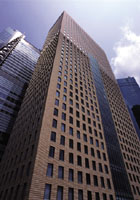 The 208 Hyatt Hotels and Resorts around the world are managed by two separate groups of companies. Subsidiaries of Hyatt International Corporation operate 86 hotels and resorts in 38 countries, with an additional 18 hotels under development. Hyatt Hotels Corporation and its subsidiaries operate, lease and franchise 122 hotels and resorts in the United States, Canada and the Caribbean.
The 208 Hyatt Hotels and Resorts around the world are managed by two separate groups of companies. Subsidiaries of Hyatt International Corporation operate 86 hotels and resorts in 38 countries, with an additional 18 hotels under development. Hyatt Hotels Corporation and its subsidiaries operate, lease and franchise 122 hotels and resorts in the United States, Canada and the Caribbean.
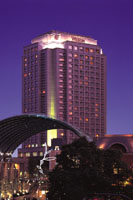 The growth in the hotel sector is tied to the current cycle of citywide regeneration, with many of the myriad of new developments opting to build spaces for the multinational hospitality brands. "I think that with more and more redevelopment projects in Tokyo, the developers or building owners realize that creating space for a hotel within the project adds value," says Tracy Mercer, general manager of the Four Seasons Marunouchi, which opened last fall. The traditional role of owner-operated hotels in Japan has shifted heavily to the luxury management companies, and developers have recognized the value in the international operators. Tokyo has great potential to become a tourism destination, and with an increase in foreign visitors to Tokyo comes a spike in the demand for luxury hotels, he adds. The 57-room boutique hotel, located in the Pacific Century Place Marunouchi, is a new concept for the Four Seasons brand and a departure from the giant properties that continue to dominate the Tokyo market.
The growth in the hotel sector is tied to the current cycle of citywide regeneration, with many of the myriad of new developments opting to build spaces for the multinational hospitality brands. "I think that with more and more redevelopment projects in Tokyo, the developers or building owners realize that creating space for a hotel within the project adds value," says Tracy Mercer, general manager of the Four Seasons Marunouchi, which opened last fall. The traditional role of owner-operated hotels in Japan has shifted heavily to the luxury management companies, and developers have recognized the value in the international operators. Tokyo has great potential to become a tourism destination, and with an increase in foreign visitors to Tokyo comes a spike in the demand for luxury hotels, he adds. The 57-room boutique hotel, located in the Pacific Century Place Marunouchi, is a new concept for the Four Seasons brand and a departure from the giant properties that continue to dominate the Tokyo market.
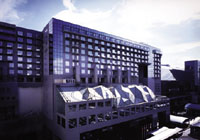 The Granvia Hotel, operated and managed by JR West Hotels Development, which is 100 percent owned by JR West, is currently the largest hotel in the city with a market share of 22.4 percent -- by comparison, the Kyoto Okura has a 13.4 share and The Westin Kyoto 21.5 percent. In contrast to Tokyo, the market in Kyoto suffers far more from seasonal fluctuations, with peak occupancy occurring during the cherry blossom and autumn leaf-viewing periods. At these times, demand exceeds room availability. But during the rest of the year, the hotels rely heavily, perhaps too heavily, on travel agency bookings. "Business mix by travel agencies here is extremely high, easily over 50 percent, with some hotels over 60 percent, while in Tokyo it is probably around 20 percent or less," says Murayama, who has worked in the Hilton and Westin Hotels in Japan.
The Granvia Hotel, operated and managed by JR West Hotels Development, which is 100 percent owned by JR West, is currently the largest hotel in the city with a market share of 22.4 percent -- by comparison, the Kyoto Okura has a 13.4 share and The Westin Kyoto 21.5 percent. In contrast to Tokyo, the market in Kyoto suffers far more from seasonal fluctuations, with peak occupancy occurring during the cherry blossom and autumn leaf-viewing periods. At these times, demand exceeds room availability. But during the rest of the year, the hotels rely heavily, perhaps too heavily, on travel agency bookings. "Business mix by travel agencies here is extremely high, easily over 50 percent, with some hotels over 60 percent, while in Tokyo it is probably around 20 percent or less," says Murayama, who has worked in the Hilton and Westin Hotels in Japan.
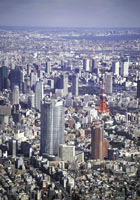 Taxing times
Taxing times
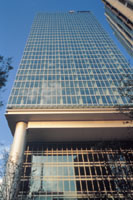 Japan's economic power as a supplier of tourist dollars has long been recognized by the United States. The US Department of Commerce reports that Japanese travelers spent nearly $14 billion in America in 2000. The same report showed that pre-9/11, US visitors to Japan spent $9 million and that Japan ranked in the top 10 destinations for American travelers. While slow economies, terrorism, the war in Iraq and the SARS epidemic saw these figures almost halved, the general resilience of the travel sector -- excluding the airlines -- could point to a relatively quick recovery for Japan. Travel industry figures for 2002 actually showed an increase in passenger departures to an all-time high of JPY700 billion.
Japan's economic power as a supplier of tourist dollars has long been recognized by the United States. The US Department of Commerce reports that Japanese travelers spent nearly $14 billion in America in 2000. The same report showed that pre-9/11, US visitors to Japan spent $9 million and that Japan ranked in the top 10 destinations for American travelers. While slow economies, terrorism, the war in Iraq and the SARS epidemic saw these figures almost halved, the general resilience of the travel sector -- excluding the airlines -- could point to a relatively quick recovery for Japan. Travel industry figures for 2002 actually showed an increase in passenger departures to an all-time high of JPY700 billion.




